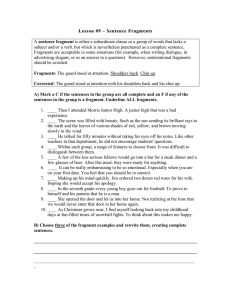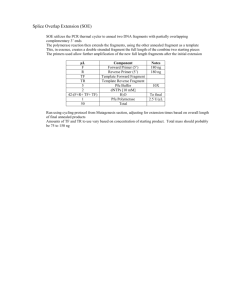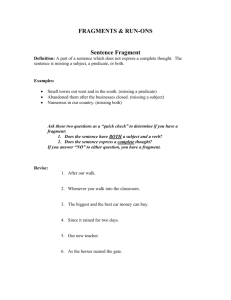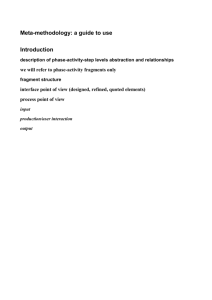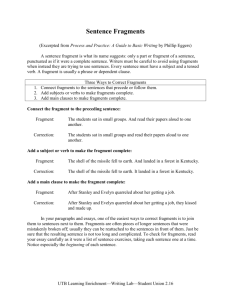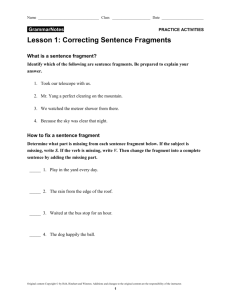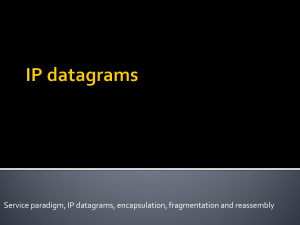Assignment #2
advertisement
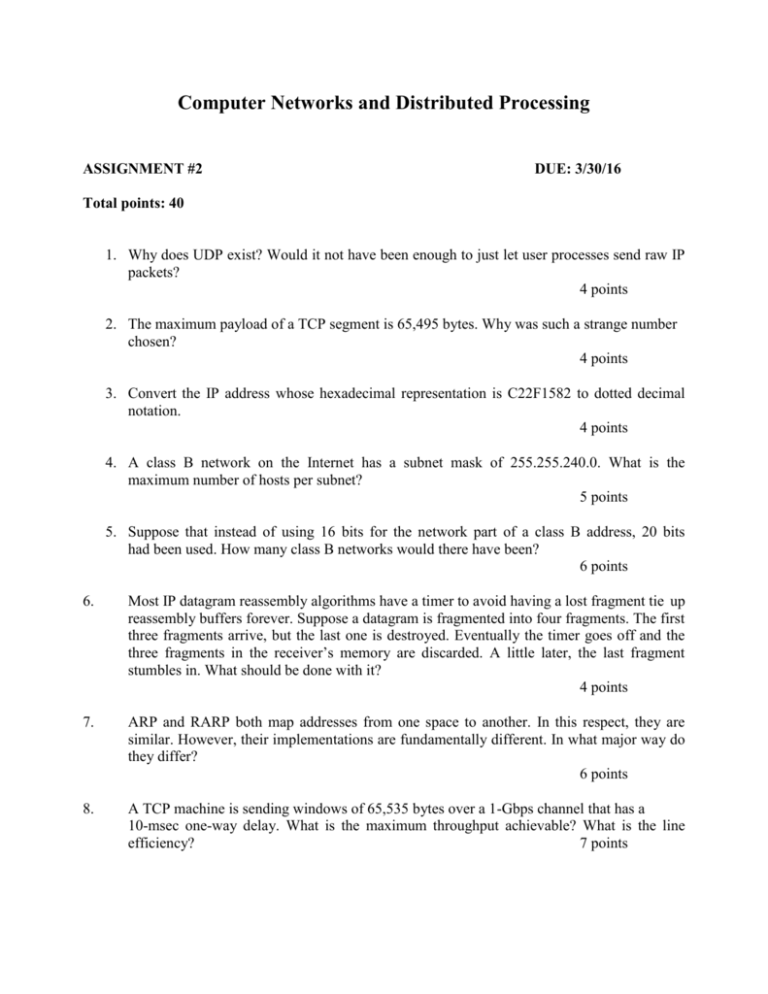
Computer Networks and Distributed Processing ASSIGNMENT #2 DUE: 3/30/16 Total points: 40 1. Why does UDP exist? Would it not have been enough to just let user processes send raw IP packets? 4 points 2. The maximum payload of a TCP segment is 65,495 bytes. Why was such a strange number chosen? 4 points 3. Convert the IP address whose hexadecimal representation is C22F1582 to dotted decimal notation. 4 points 4. A class B network on the Internet has a subnet mask of 255.255.240.0. What is the maximum number of hosts per subnet? 5 points 5. Suppose that instead of using 16 bits for the network part of a class B address, 20 bits had been used. How many class B networks would there have been? 6 points 6. Most IP datagram reassembly algorithms have a timer to avoid having a lost fragment tie up reassembly buffers forever. Suppose a datagram is fragmented into four fragments. The first three fragments arrive, but the last one is destroyed. Eventually the timer goes off and the three fragments in the receiver’s memory are discarded. A little later, the last fragment stumbles in. What should be done with it? 4 points 7. ARP and RARP both map addresses from one space to another. In this respect, they are similar. However, their implementations are fundamentally different. In what major way do they differ? 6 points 8. A TCP machine is sending windows of 65,535 bytes over a 1-Gbps channel that has a 10-msec one-way delay. What is the maximum throughput achievable? What is the line efficiency? 7 points

